The Hennen Building (The Maritime)
Introduction
Text-to-speech Audio
This 11-story building became New Orleans' first skyscraper when it was completed in 1895. It remained the city's tallest building until 1904. The building still features dozens of projecting bay windows topped by cast iron balconies and bas-relief sculptures of eagles and pelicans. The skyscraper, originally built for commercial use, has been re-purposed as luxury apartments. Once among New Orleans' largest hotels, the building now houses the Maritme condos. It was added to the National Register of Historic Places in 2007.
Images
The Hennen Building was the tallest building in New Orleans from the time it was completed in 1895 until 1903.
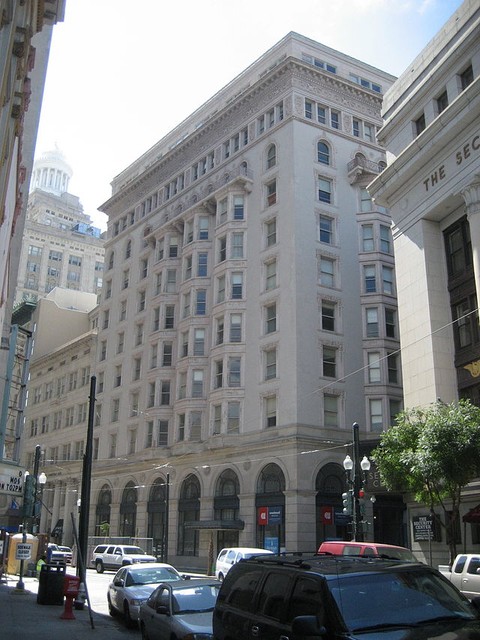
This photo focuses on the Hennen Building's unique bay windows and the balcony that sits atop them.
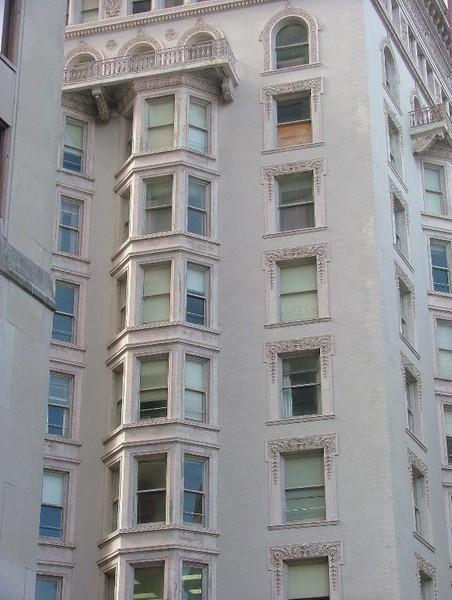
A close up of one of the bas-relief sculptures that dot the building's exterior.
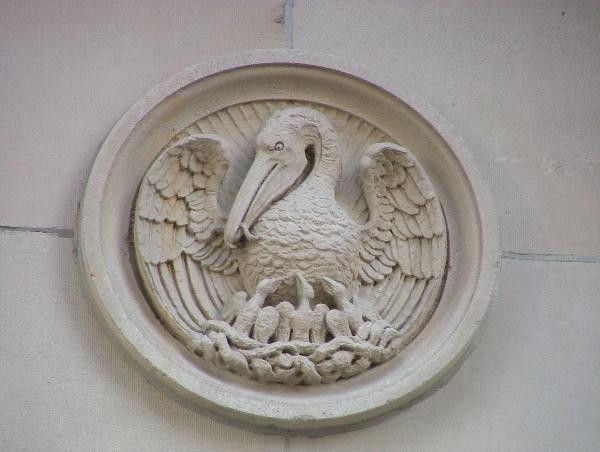
The Hennen Building as it looked around 1908. The eleventh floor was in the process of being added when this photo was taken.
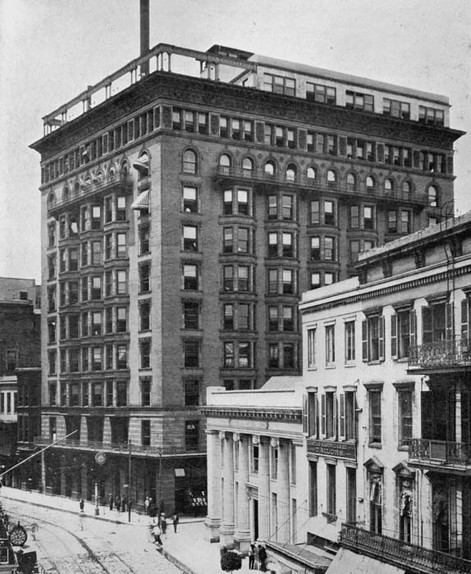
This photo from the collection of the Library of Congress shows New Orleans, with the Mississippi River in the distance, taken from the top of the Hennen Building in 1903.
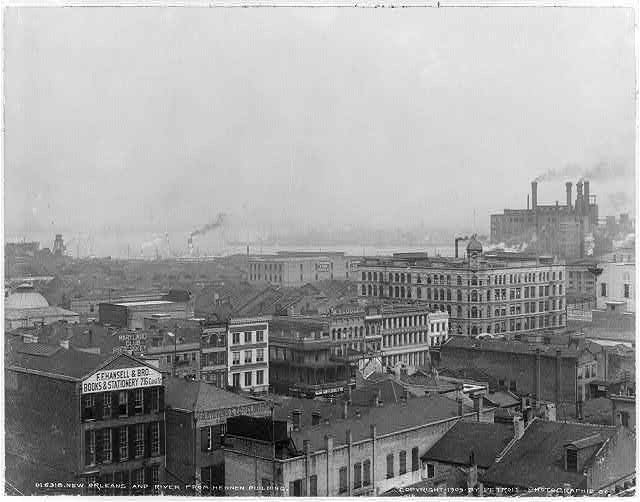
Backstory and Context
Text-to-speech Audio
The
skyscraper was built by architect Thomas Sully, one of the most-influential architects in Louisiana during the late 19th century. Originally built at ten stories high and 150 feet, the Maritime (formerly known as the Hennen Building) soared high above all other structures in New Orleans when it was completed in 1895. One of the original key features of the Hennen Building was the rooftop garden. 1
New Orleans' sandy soil provided a significant challenge for constructing skyscrapers.
New Orleans' sandy soil provided a significant challenge for constructing skyscrapers.
Before its construction, Sully traveled to Chicago to see how that city’s architects utilized pilings, sunk below grade, to support tall buildings. In 1922, architect Emile Weil was commissioned to extend the Hennen by two bays along Carondelet Street. He added [an 11th] floor, thereby eliminating Sully’s roof garden, and also removed some of the ornament on the building’s first two floors. 2
The building stands as a monument to the birth of New Orleans as a modern urban center. From 1850 to 1930, New Orleans grew from 100,000 residents to 450,000. That growth spurred the city's business development and subsequent development of the downtown region. With the advance of the Chicago School of Architecture, from which Sully took his lessons, the problem of New Orleans' sandy soil was resolved, allowing for a building boom. Although the Hennen Building was the tallest building in New Orleans in 1895, the nearby Carondelet surpassed it by thirty feet in 1903. 3
Today, the building owns the name "The Maritime." In 2006, the building was purchased by a group headed by architect/developer Marcel Wisznia and has been completely renovated and transformed into a mixed-use building with commercial space on the first floor, office space on the second and 105 luxury apartments in the remaining floors. It won the Tony Goldman Award, given by the National Trust for Historic Preservation for the outstanding restoration of New Orleans' first skyscraper in 2013. Sources
1 Geoffrey Montes, "New and Restored Buildings in New Orleans After Hurricane Katrina," Architectural Digest (July 31, 2015); Mary Louise Christovich, et. al, New Orleans Architecture: The American Sector, Volume 2: Howard Avenue to Iberville Street, Mississippi River to Claiborne Avenue, (Gretna, Louisiana: Pelican Publishing, 1972), 60.
2 John C. Ferguson, "Thomas Sully." In KnowLA Encyclopedia of Louisiana, ed. David Johnson Louisiana (New Orleans: Endowment for the Humanities, 2011), http://www.knowla.org/entry/475/.
3 Christovich, et. al, New Orleans Architecture: The American Sector, Volume 2, 60; Craig E. Colten, ed, "Growing Demands of a City," in Transforming New Orleans and its Environs: Centuries of Change, (Pittsburgh: University of Pittsburgh Press, 2000), 107.
2 John C. Ferguson, "Thomas Sully." In KnowLA Encyclopedia of Louisiana, ed. David Johnson Louisiana (New Orleans: Endowment for the Humanities, 2011), http://www.knowla.org/entry/475/.
3 Christovich, et. al, New Orleans Architecture: The American Sector, Volume 2, 60; Craig E. Colten, ed, "Growing Demands of a City," in Transforming New Orleans and its Environs: Centuries of Change, (Pittsburgh: University of Pittsburgh Press, 2000), 107.
